











El Escorial
El
Escorial, royal palace 43 km (27 mi) northwest of Madrid, founded in the 16th
century by Philip II of Spain. It incorporates a cathedralesque church, a
monastery, a school, and a famous library, and reflects the deeply pious
outlook of its founder. The vast complex, said to contain 160 km (100 mi) of
corridors, was constructed between 1563 and 1584.
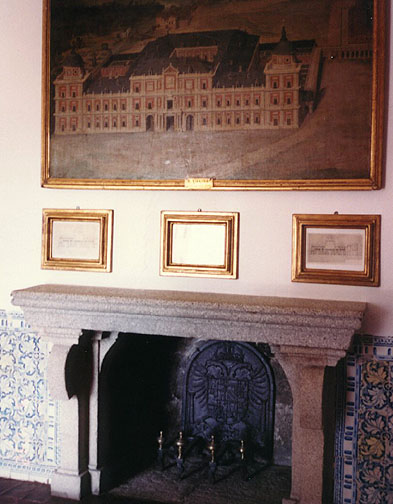
inside
fireplace with painting of the palace
Philip's
intention was to build a royal burial place for the monarchs of Spain in
accordance with the wishes of his father, Emperor Charles V, and to honor a
vow he had made to build a church dedicated to Saint Lawrence. After the death
of Spaniard Juan Bautista de Toledo, the first architect of the palace, in
1567, the work was completed by another Spanish architect, Juan de Herrera.
Philip lived at El Escorial for 14 years and died there in 1598.
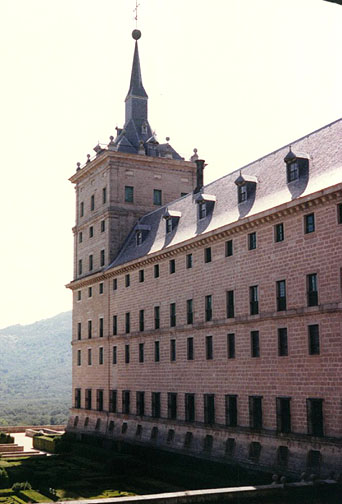
As
approached from the west, its main entrance, the palace resembles a fortress.
Its architectural forms, based principally on classical Roman sources (see
Classic, Classical and Classicism), convey monumental grandeur, combined with
a simplicity of decoration that borders on severity. Within, the royal
apartments are relatively modest, since Philip's religious convictions led him
to live in considerable austerity.
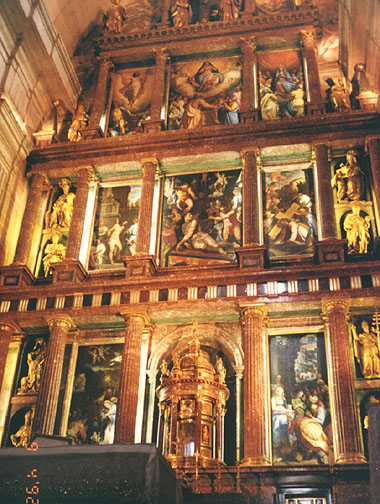
In
contrast, the church (1578-1581) is vast and elaborately decorated. The royal
burial vault (Panteón de los Reyes), constructed after Philip's own death,
contains the bodies of Charles V (brought there in 1634), of Philip himself,
and of many subsequent Spanish monarchs. South of the church is the Patio de
los Evangelistas (Courtyard of the Evangelists), the heart of the monastery.
The library (Biblioteca de Impresos), located on the first floor of the
northwest wing, is rich in early printed books and manuscripts. Its painted
ceiling was executed between 1590 and 1592 by Italian artist Pellegrino
Tibaldi.
El
Escorial was relatively little used by Philip's successors. Charles IV, who
disliked its severity, built the nearby Casita del Principe in the 1770s and
El Escorial ceased to be a royal residence in 1861.

Valley of the Fallen
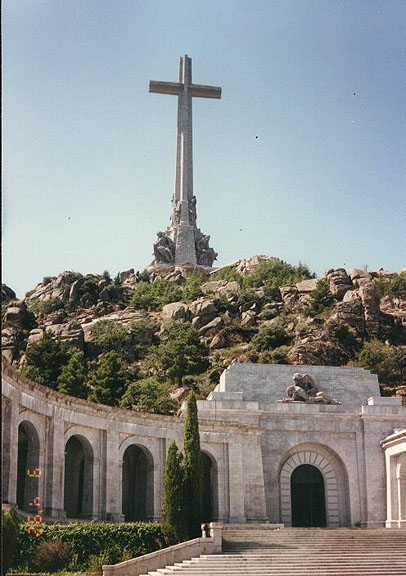
A few
miles away stands a gigantic civil war memorial built by General Franco. Known
as the Valle de los Caidos (Valley of the Fallen), it took more than 15 years
to complete. It consists of a concrete cross nearly 150 m (nearly 500 ft)
high, built on top of a huge crypt tunneled out of solid granite inside the
mountain itself.
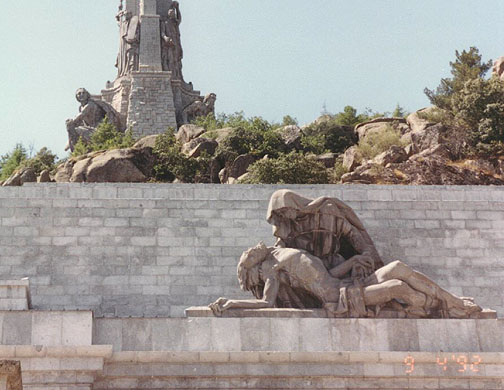
A
monument to Franco’s victory in the civil war, and constructed with the
forced labor of prisoners of war, it is no longer a very popular place for
Spaniards to visit.
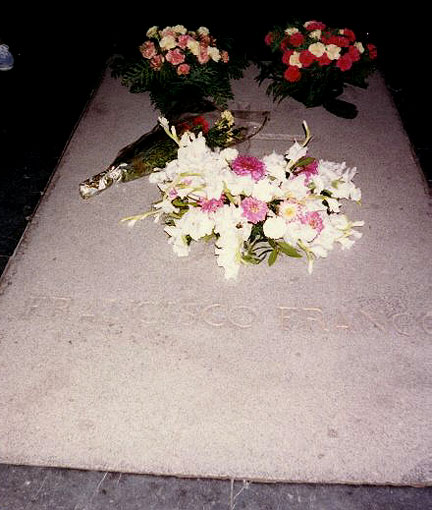
Franco's
Grave site inside the tunnel

Córdoba
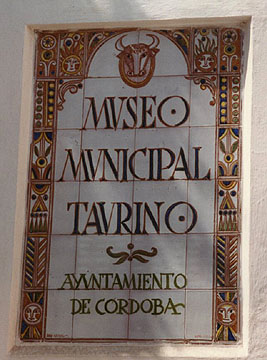
Córdoba
(Spain) (English Cordova), city in southern Spain, capital of Córdoba
Province, in Andalucía, and one of Spain's most famous cities.
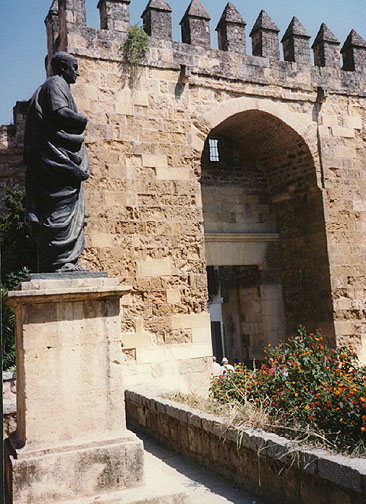
Located
on the Guadalquivir River, it retains in its older sections the whitewashed
walls, narrow streets, and colorful patios of a Moorish city. Córdoba is a
trade center for the olives and citrus fruit produced nearby and also has many
manufacturing industries. Products include processed food, beer, textiles,
machinery, and refined copper. A variety of handcrafted items, especially
silver and leather goods, are also produced, chiefly to be sold to the many
tourists who visit the city.
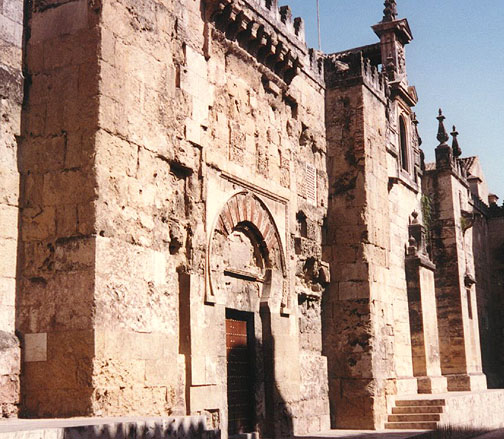
Cordova
Cathedral
The city's
most noteworthy building is its great cathedral, which originally was
constructed (8th-10th century) as a Moorish mosque on the site of a Roman
temple and later of a Visigothic church.
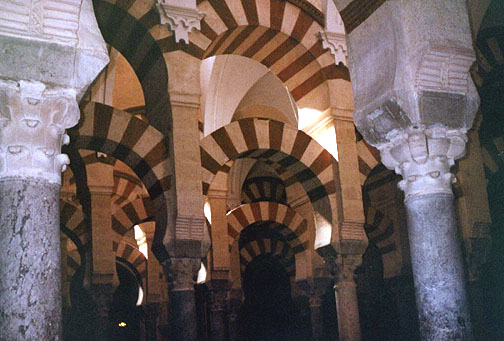
Moorish
arches in cathedral
Córdoba's mosque was noted as
Europe's largest and most beautiful Muslim holy building before its conversion
into a Christian church in 1236.
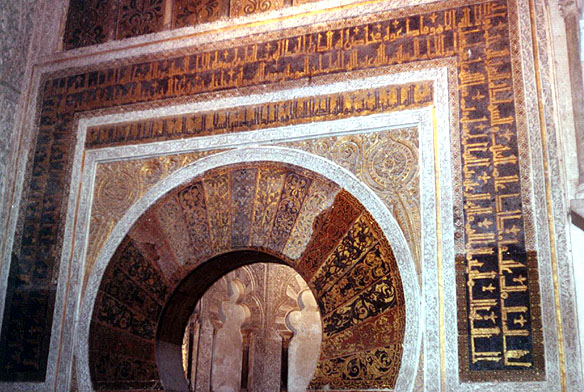
Another notable structure is the Alcázar, a
former Moorish palace erected on the site of Roman buildings and used in later
centuries as the seat of the Inquisition; it is now largely in ruins. A bridge
of 16 arches, built by the Romans and reconstructed by the Moors, connects the
central city with Campo de la Verdad, a section across the Guadalquivir; near
the bridge is Calahorra Castle. The city is the seat of the University of
Córdoba (1972).
Córdoba
was an important city as early as Phoenician and Carthaginian times. It
flourished as a major Roman settlement from the 1st century BC to the 5th
century AD and subsequently was captured first by the Visigoths (572) and then
by the Moors (711). In 756, Abd-ar-Rahman I, a member of the Umayyad family,
made Córdoba the capital of Moorish Spain, and for the next 250 years the
city was one of the world's great commercial and intellectual centers. In
929Abd-ar-Rahman III established the caliphate of Córdoba, and the city
reached a peak of prosperity, rivaling Damascus and Baghdâd in its brilliance
and intellectual activity. The material well-being of Córdoba declined after
the early 11th century as Muslim rule in Spain disintegrated, but it remained
a center of literature and scholarship.
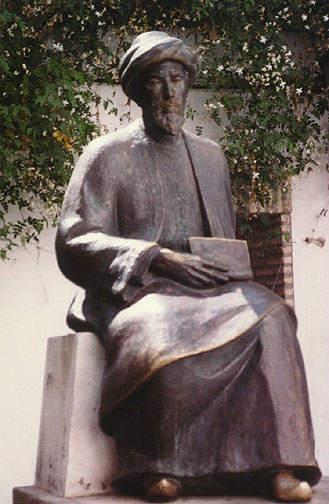
In
the 12th century the philosophers Averroës and Maimonides were active in
Córdoba. In 1236 the city was captured and made part of Roman Catholic Spain
by Ferdinand III of Castile. In 1808, during the Napoleonic Wars (1799-1815),
it was sacked by the French. Population (1991) 300,229.












Return
to Spain page







































































Return
to People and Places





![]()


























































































